What is a UTM Parameter strategy?
A UTM strategy is where you plan out how you are going to use UTM parameters for your business. There are lots of different ways they can be used, It’s worth noting that they are case sensitive so a format should be decided upon before starting out to ensure best results and to save you time in the long run when analysing data.
What are UTM Parameters?
UTM parameters are added to the end of links in marketing campaigns that then allow you to track performance and make decisions from within Google Analytics (GA).
There are 5 parameters that are available to use, they are:
- Source
- Medium
- Campaign
- Term
- Content
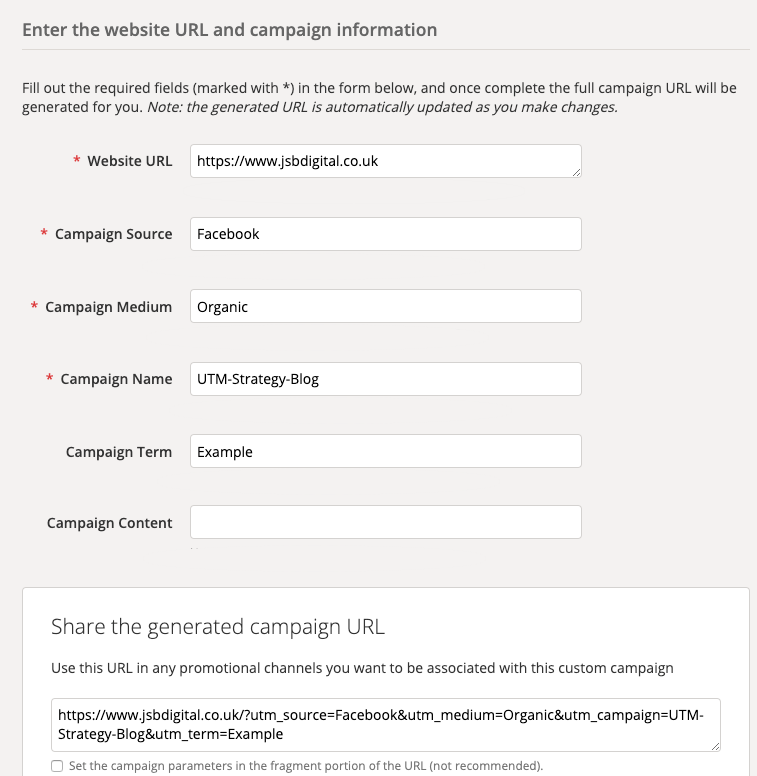
You don’t have to use them all, and you can use them however you wish. In the rest of this article I will outline my suggestions on how to use them and show examples of them in use where possible – in some occasions I have blurred out confidential data to protect my clients’ data.
As UTMs are URL parameters, it’s worth noting that you cannot have spaces between words, so if you wanted to use Christmas Sale, you would have to use “ChristmasSale”, “Christmas-Sale” or “Christmas_Sale” for example.
UTM Source:
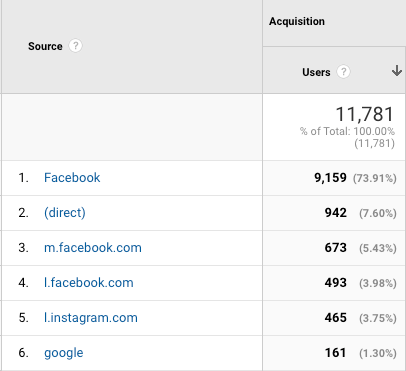
UTM source is most commonly used as the origin of the traffic. If you are running an advertising campaign on Facebook, you would put Facebook (Or FB perhaps) as the source. I would advise using UTMs for any link that pushes back to your website on any channel.
The example in the image above are where users it begins with m. or I. facebook/instagram are where there has not been a UTM parameter used, you can still see the source of the traffic but that’s the limits of your ability to track the traffic.
You can also use UTMs for email marketing too, with the source being “Email” for example.
UTM Medium:

Enjoying this article? Share it with your friends!
I use UTM Medium to differentiate between paid and organic traffic.
If the UTM link is being used in a campaign I will use “Ad” as the medium, and if it’s being used for an organic post I use “Organic”. I suggest to use the same values across all channels for this, for example it would then make it easier to track paid and organic traffic across multiple channels.
If you wanted to track your email marketing performance using UTMs, you could put the type of email as the medium e.g “Newsletter”, “AbandonedCart”, “Sale”.
I would also use the UTM medium as “Bio” for any links that are in Bio’s on social media platforms, or “Signature” for your email signatures too so you can see who’s emails are generating the most engagement (it would be worth using Campaign, Term or Content to differentiate between staff members as well on email signatures).
UTM Campaign:
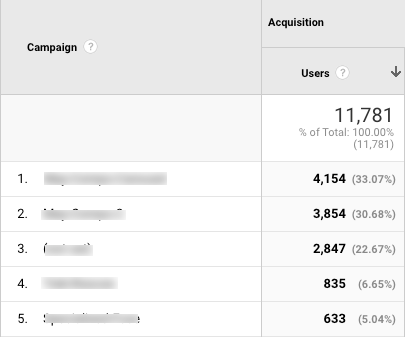
UTM Campaign is used to distinguish between campaigns (the clue is in the name!).
It’s best practise to leave this the same for all links within a campaign, that way you can see the overall performance, across channels.
For example, if you were running a sales campaign in June, “June-Sales” could be your UTM campaign parameter.
For emails, again it would be similar to the above and you would put the name of the email.
UTM Term: (Known as ‘keyword’ in GA)
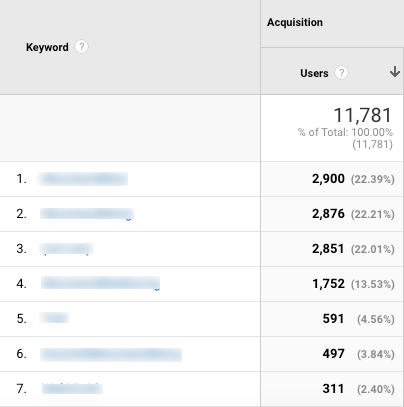
UTM Term is one of the most subjective parameters, you can use this however you wish. I have seen this used in many different ways.
Google suggests you use it to differentiate between the paid keywords used, although with Google ads you can link with your analytics account and then there isn’t such a need for you to create a separate UTM for every keyword as this will be done automatically.
You can also use it to differentiate between interests, (this is how I use UTMs for my Facebook campaigns). This way you can see how your audiences perform against each other.
Another way you can use UTM term is by putting the date of the content in there, for example 26/05/20. This could be used for emails or organic social media posts so you could see which date posts performed the best.
You could also enter the day of the week of the content here to analyse which day of the week performans best for different platforms.
UTM Content: (known as ‘ad content’ in GA)
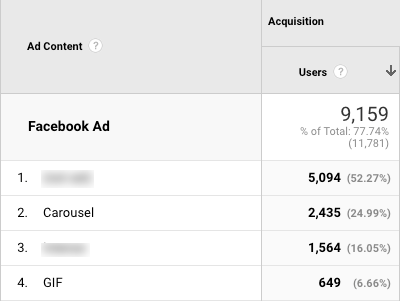
UTM Content is best used to differentiate between ads. You can be as simple as “Ad1” and “Ad2” or you can be more specific and put the type of advert in here, for example “Carousel” or “Video” or “GIF”.
You can also use this to differentiate between placements, for example Youtube, Search or Display ads. (NOTE: This could also be done in UTM Term, Source or Medium).
Conclusion:
One of the main arguments against using UTMs as text links is that they can look a bit ugly and potentially look spammy to the end users: www.jsbdigital.co.uk?utm_source=Facebook&utm_medium=Organic&utm_campaign=UTM-Strategy-Blog&utm_term=Example
There is a work around for this though, you can convert UTM links into a ‘vanity url’. You can use bitly vanity URLs for free, here is as an example of a bitly version of the link above https://bit.ly/2zu8zPi . This is the best practise for using UTMs, especially on social media!
You can go further and by a custom domain to use as your own vanity URL and you can link it up with a paid version of Bitly, you could then make your vanity URLs represent your brand, for example if I purchased the domain jsb.co I could have a vanity URL of jsb.co/UTMStrategy for this blog.
If you are looking to create your own UTMs I would recommend using this free tool from Google: https://ga-dev-tools.web.app/campaign-url-builder/.
Like what you see?
Send me a WhatsApp or book yourself a free 30 minute discovery call to find out how I could help your business grow using PPC advertising.
Copyright 2021©
